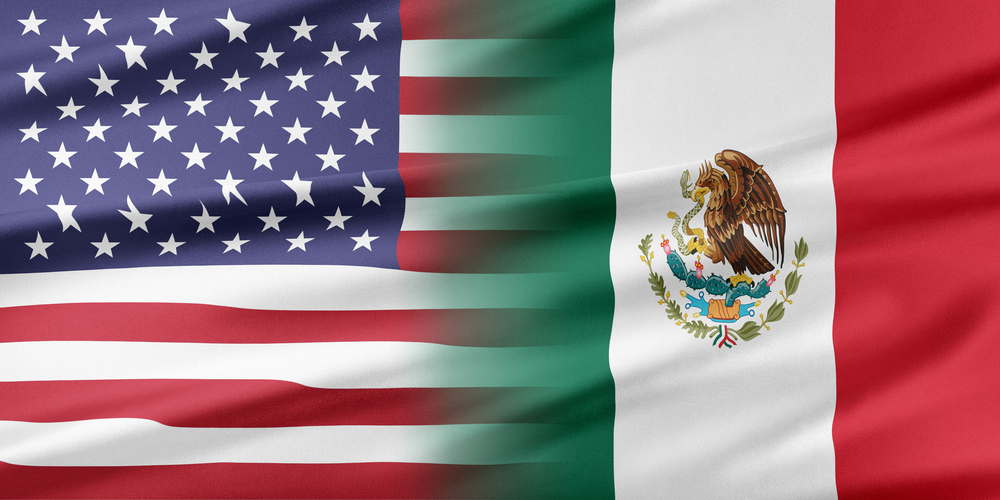In the first quarter of 2019, Mexico took the lead as the United States' largest trading partner per the value of goods, a spot China has held since 2015. Mexico has proven to be a strong alternative site for low-cost manufacturing, particularly as tariffs continue to hammer China-based operations. And while Mexico has long demonstrated benefits ranging from wage stability to tax benefits, fewer organizations looking to expand their global manufacturing footprint factor in one of the most significant benefits of manufacturing in Mexico over China: intellectual property (IP) protection.
While China has made strides in recent years to increase protections for its businesses, manufacturers still have reason for concern. A 2019 report on Trends in Trade in Counterfeit and Pirated Goods from the Organization for Economic Co-operation and Development (OECD) found that of the USD $509 billion in fake goods seized at customs in 2016, the majority of those fake goods originated in China and Hong Kong.
Mexico, meanwhile, continues to strengthen its IP protections. For example, the U.S.-Mexico-Canada Agreement (USMCA), which is near complete ratification, thrusts IP protections into the spotlight. The updated trade agreement overhauls IP protections, broadening provisions for protecting trademarks and laying out standards for protecting digital content, among other improvements. It also grants customs officials new authority in seizing suspected counterfeit or pirated goods being imported, intended for export, or in transit.
However, USMCA isn’t the only IP protection measure in place. Mexico is also part of the World Intellectual Property Organization, a signee of the Patent Cooperation Treaty and Trademark Law Treaty, and party to ten other IP agreements.
If you are deciding wether to manufacture in Mexico or China and IP is a concern, consider these 4 key differences:
Copyright protections
Mexico’s Federal Copyright Law, enacted in December 1996, affords copyright protection to authors or owners of exclusive rights to books, sound recordings, computer software, or other works of original expression and lays out causes of infringement. Other relevant legislation is found in the Industrial Property Law. While copyright registration is not required for obtaining copyright protection, the National Copyright Institute recommends registration to clearly establish copyright ownership, particularly useful in enforcement proceedings against infringers. Authors or owners are guaranteed protection for 100 years after their death, exceeding the 75-year term set by USMCA. The copyright law grants the author both moral and economic rights.
As a signatory of the Berne Convention for the Protection of Literary and Artistic Works, Mexico provides protection to other’s nationals’ copyrighted works.
While China likewise has a Copyright Law in place, it has been silent on many sources of infringement, ranging from broadcasts to applied arts, among others. In 2011, 2014 and again in 2019, China proposed amendments to its copyright law, but progress has been slow to update the rules. In general, the copyright law protects authors’ copyright in their literary, artistic, and scientific works. China does not require registration, but copyright registration is recommended to support the owner in more easily proving their rights during a dispute.
Trademarks, Names and Slogans
The Mexican Law of Industrial Property notes that any individual or company seeking to distinguish its products or services can apply for trademark registration. Trademark protection covers any sign that is perceivable by the senses and clearly represented in a manner that makes it distinguishable from other products or services in the market. This includes protection for scents, sounds, motions and colors. Through its ratification of USMCA, Mexico has agreed to enhance provisions for protecting well-known marks.
Trademarks in Mexico may be registered for a period of ten years and can be renewed for an unlimited number of ten-year terms. While trademarks are valid beginning with the filing date, legislation passed in 2016 establishes opposition procedures for trademark applications to better ensure legal compliance and prevent the issue of bad-faith trademarks. Registration establishes an exclusive right to use by the registrant, although prior rights may be granted to earlier non-registered users of trademarks.
In China, trademark ownership is determined on a first-to-file basis. Because China does not recognize trademarks registered in other countries, “trademark squatters,” who file in China trademarks for names well known in other countries, are rampant. Foreign companies including Apple, Tesla, and New Balance have faced trademark disputes in Chinese as a result.
In addition, local law dictates that foreign businesses appoint Chinese trademark agencies for their trademark registration. A trademark in China is likewise valid for 10 years. Anyone can file an opposition against the trademark within three months from the date of publication.
Patents
Patents filed in Mexico are good for 20 years, although it takes, on average, four years for a patent to be granted. This time includes a lengthy examination period and opportunity for opposition, to ensure that the patented invention is, in fact, new, inventive and industrially applicable. In 2016, more than 17, 000 patents were filed, predominantly from the United States, Mexico and Germany. Foreign patent applicants are required to perform patent prosecution in Mexico through a registered Mexican patent attorney.
USMCA also lays out patent protection through patentability standards and patent office best practices that better support innovations from small- and medium-sized businesses.
Patents in China grant legal rights to patentees for creations that include inventions, utility models and designs. Law requires that these inventions and utility models “be novel, creative and of practical use” to receive a patent. Patents will be given to designs that are distinctive and do not conflict with existing designs. Like trademarks, China grants patents on a first-to-file basis. At present, China has no process in place for patent opposition. Patents for inventions are valid for 20 years, while utility models or designs can be patented for 10 years.
Intellectual Trade Secrets
Mexico’s Industrial Property Law regulates the protection of trade secrets, which it defines as any and all industrial or commercial information kept confidential by an individual or organization, that provides the owner to obtain or maintain a competitive or economic advantage in certain activities. The IP Law establishes civil and criminal sanctions for individuals who breach these obligations. However, the updated USMCA sets out the strongest protection for trade secrets of any other U.S. trade agreement. It lays out criminal procedures and penalties for trade secret theft through cyber-theft and by state-owned enterprises.
In 2019, China amended the trade secret provisions of the PRC Anti-Unfair Competition Law. The updated provisions expand the definition of “trade secret” to cover technical information, operational information and “other business information.” Critics warn that the broadened definition could encourage individuals or organizations to assert rights to information that should not be protected as secret. The new provisions also count computer trespassing as an inappropriate means for gathering information. While the changes represent a good-faith effort to better protect trade secrets, organizations are closely watching to see if enforcement follows these strengthened measures.
Your partner expand into Mexico with confidence
While Mexico has a long history of supporting innovation, it continues to work to strengthen its protections for creators and inventors. However, navigating these new protections is best done with an experienced partner. To better understand how IP laws protect your manufacturing IP in Mexico, contact Tetakawi today.
Subscribe
Sign up and stay informed with tips, updates, and best practices for manufacturing in Mexico.





